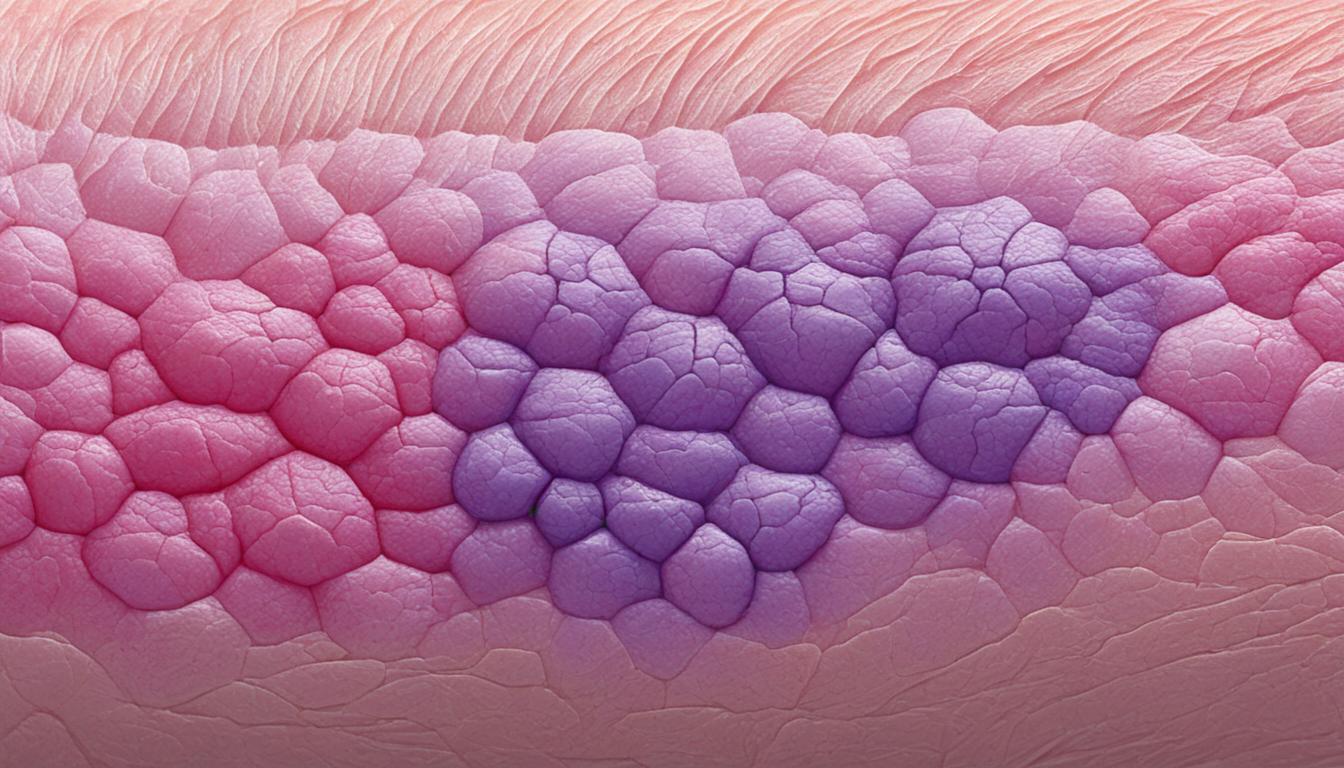DFSP is a rare soft tissue tumor mainly affecting skin layers like the dermis and subcutaneous fat. It shows up as a steadily growing, hard plaque on young adults’ trunks. The true cause of DFSP isn’t fully understood. However, it’s thought to be linked to an anomaly in certain genes, which could lead to too much PDGF, a growth factor, and thus the tumor’s growth.
To diagnose DFSP, a skin biopsy is needed. The biopsy also shows hallmark signs of DFSP. This cancer is viewed as moderately serious. But it usually doesn’t spread far. Still, it comes back where it first grew after removal more often than some others do.
Options for dealing with DFSP are narrow. Doctors often choose a careful approach like MMS or a wide removal surgery. In advanced situations, where these surgeries are not an option, a drug named imatinib mesylate might be picked. This is for cases where the tumor cannot be entirely removed, comes back a lot, or has already spread.
Key Takeaways:
- Dermatofibrosarcoma protuberans (DFSP) is an uncommon skin tumor affecting deep layers.
- DFSP emerges as a solid growth on young adults’ trunks.
- Its cause involves genetic changes, possibly leading to excessive growth signaling.
- DFSP is diagnosed with a skin biopsy, which shows typical signs under the microscope.
- Treatments may involve precise surgery, and for complex cases, a special drug can be considered.
Evaluation and Management of Dermatofibrosarcoma Protuberans
Diagnosing DFSP is a careful process to make sure it’s right and that it gets treated correctly. Doctors usually do a skin biopsy first to check the tissue. A detailed health history and a full body check, including checking the lymph nodes, is important too. This helps see how much the disease has spread.
Besides, doctors might order a chest x-ray or other tests to check for spread. An MRI might also be needed before surgery to see how large the tumor is.
The best way to treat DFSP is by surgery to remove it. A special surgery called Mohs micrographic surgery (MMS) is preferred. It helps the doctor make sure all the cancer is gone while saving as much healthy skin as possible. Since DFSP can grow in areas not easily seen, MMS is a good choice. But if MMS can’t be done, a different kind of surgery may be used.
If surgery doesn’t work or the disease comes back, a medicine called imatinib mesylate can help. It’s taken by mouth and works to stop the cancer’s growth by blocking a certain protein in the body. The FDA has approved this medicine for adults with DFSP.
Mohs Micrographic Surgery vs. Wide Local Excision
Mohs micrographic surgery and wide local excision are two ways to surgically treat DFSP. Let’s look at how they compare:
| Mohs Micrographic Surgery | Wide Local Excision |
|---|---|
| Complete margin assessment | Standard margin of excision |
| Tissue preservation | Variable tissue removal |
| Ideal for tumors with subclinical extension | May require larger excision margins |
| High cure rate (up to 99%) | Risk of positive margins (6-20%) |
| Potential for immediate reconstruction | May require delayed reconstruction |
Imatinib Mesylate for Unresectable, Recurrent, or Metastatic DFSP
Imatinib mesylate is a helpful treatment for DFSP that can’t be removed by surgery, or if it comes back after surgery, or if it spreads. This medicine targets and blocks a certain protein, stopping the cancer’s growth. It has been proven to work well in patients who can’t have surgery or when the cancer returns. So, it’s a good choice for them.
Prognosis and Follow-up for Dermatofibrosarcoma Protuberans Patients
After a DFSP diagnosis, most patients have a positive outlook. They have a low chance of the cancer spreading but a higher risk of it coming back in the same area. The chance of it coming back after surgery ranges from 10% to 60%, based on the surgery used. If it does spread, it’s usually to the lungs and this happens after it comes back locally a few times.
It’s very important for patients to keep up with check-up visits. They help catch any signs of the cancer coming back or spreading. These visits might include physical checks, scans, and sometimes more biopsies. How often they need to go back depends on each person’s situation and what their doctor recommends.
Checking in on patients regularly helps doctors spot problems early. This early check can save time and improve how we treat the disease. The main goals of these follow-ups are to watch out for the cancer’s return and spread.
Staying ahead with these visits is key to managing DFSP long-term. It ups the odds of a good recovery and lowers the chances of the cancer coming back. Doctors give care that’s just right for each patient to help them on their journey with DFSP.

